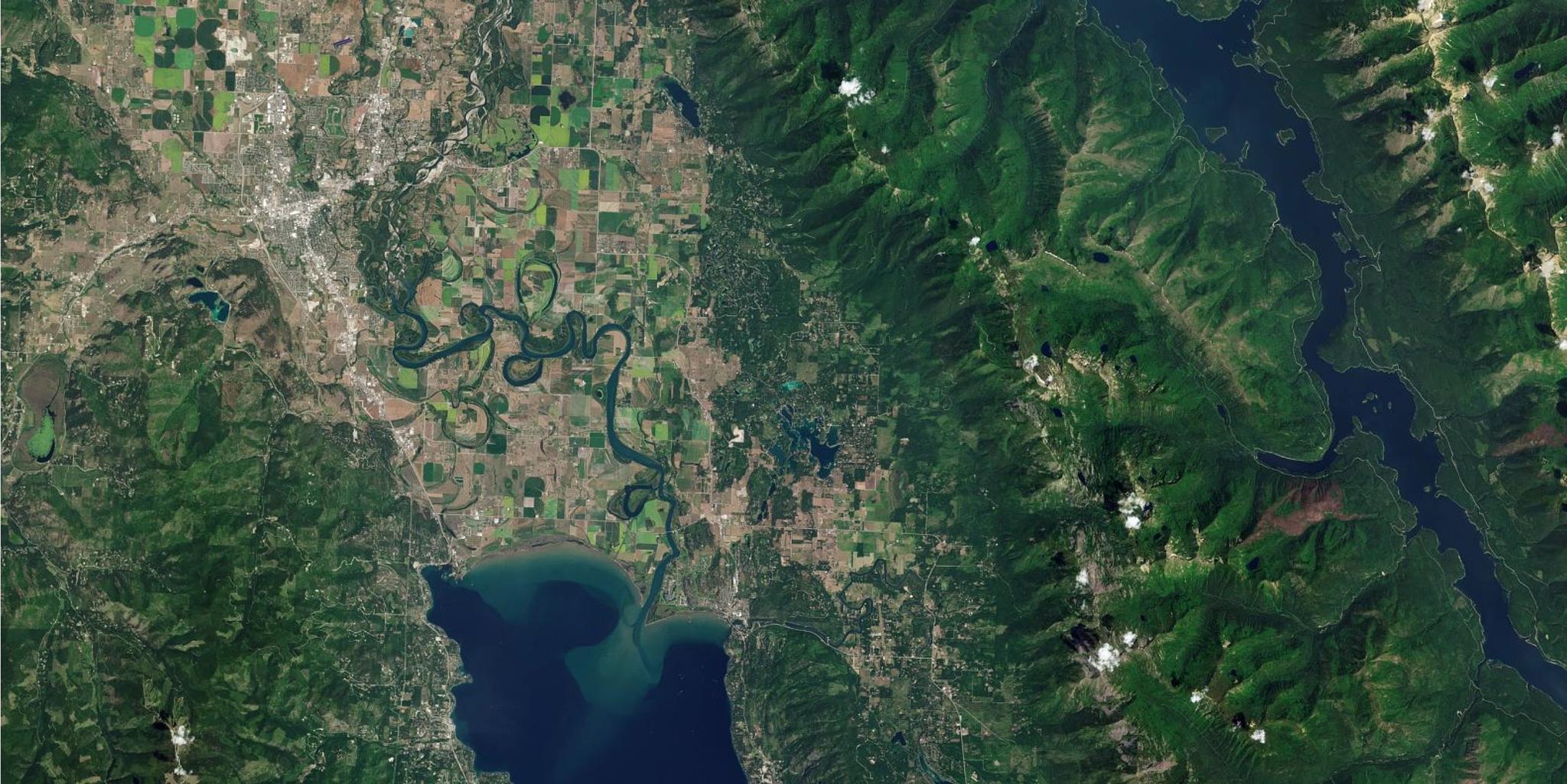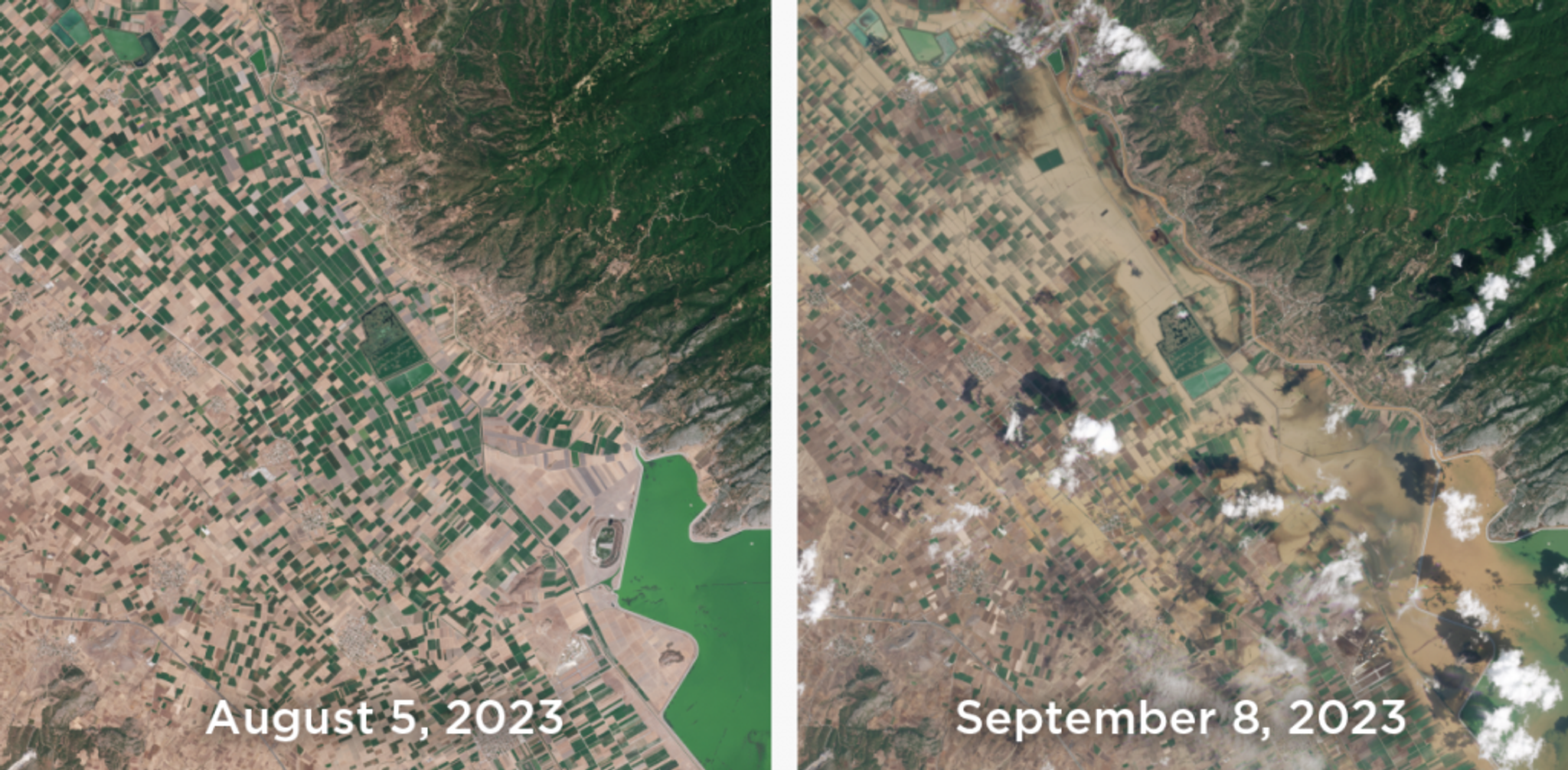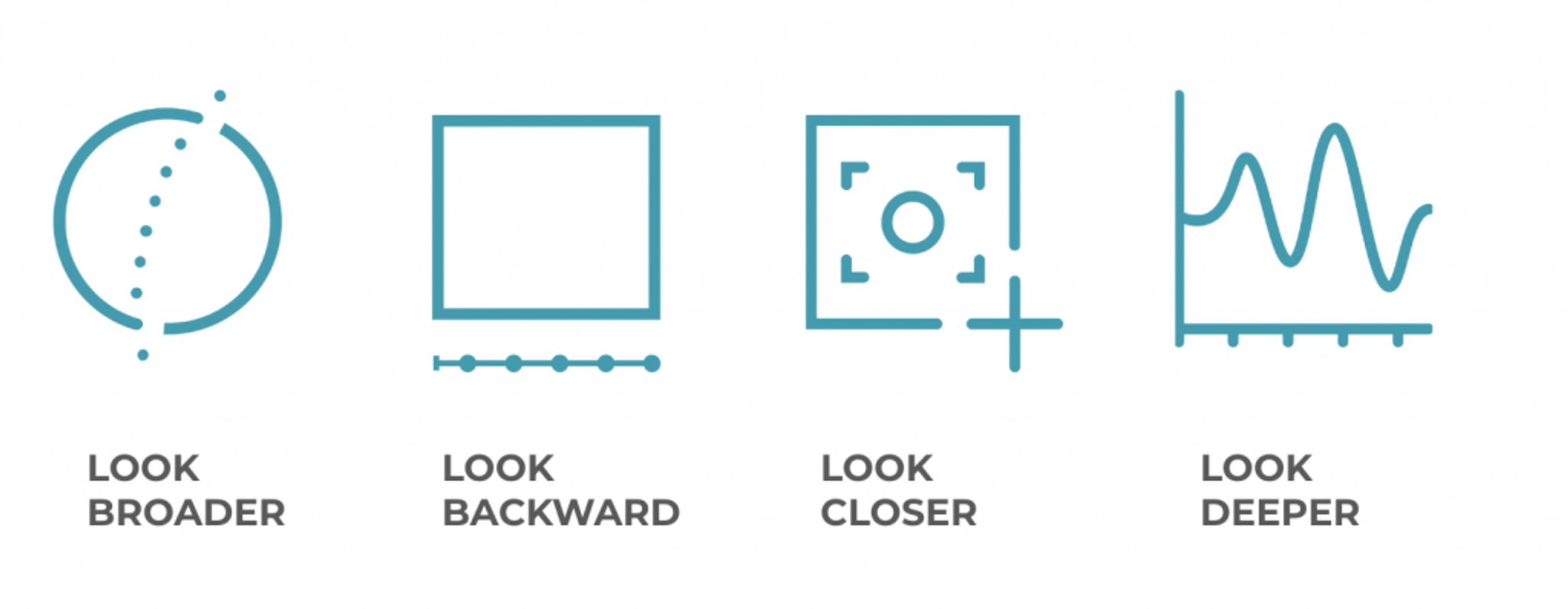Multidimensional Earth Data for Broad Area Management

PlanetScope image of part of Flathead County, Montana taken July 8, 2023. © 2023 Planet Labs PBC. All Rights Reserved.
TechDiscover why governments and businesses are investing in broad area management in order to make more informed decisions and mitigate risk.
From global economic uncertainty, to geopolitical conflict, to the climate crises and sustainability transition, governments and businesses have faced significant upheaval and transformation in recent years. To stay ahead requires comprehensive, reliable, and dynamically updated insights across geographically dispersed locations.
In this post, we’ll describe how organizations are staying competitive in light of regional and global-scale issues by using broad area management to effectively monitor, measure, and report on assets across space and time.
What Is Broad Area Management?
Broad area management refers to the practice of monitoring, measuring, and reporting on assets, whether natural or man-made, across broad geographies and timescales.
This practice is best achieved with data, analytics, and software that can scale globally, is real time, and captures multiple dimensions of information (location, time, and physical characteristics). A primary way organizations have been able to achieve this is by using Earth observation (EO) data, which offers a unique vantage point across Earth’s landmass.
Broad area management has emerged alongside the advancement of EO data, cloud computing, machine learning, and geospatial analysis. As Earth observation data has become more available and affordable, greater numbers of governments and businesses are able to access and exploit it for analyzing Earth’s changing conditions.
Large volumes of Earth data and new analytics have created a perfect storm for organizations trying to innovate or make sense of it all. While AI-powered analytics promise to automate the most resource-intensive tasks of interpreting large volumes of data, organizations today still require dedicated teams of analysts, data scientists, and GIS experts for data management and orchestration.
Governments and organizations tend to cope by focusing their resources and investment toward smaller areas and timescales that they believe they need to focus on. There are many ways to cost-effectively manage small geographic areas or short time periods, but these approaches fail as the scope expands. This results in vast areas left unobserved (with potential for unexpected events or activities). Unfortunately, costs, risks, and losses often accumulate for places and events where people least expect them to change.
The ability to passively monitor broad areas, detect change, and reliably characterize “before” and “after” states is similar to having an insurance policy for expected and unexpected events. Planet has been at the forefront of providing broad area management to customers and partners across the globe, from industries ranging from government, to agriculture, to natural resource management, to insurance.

This pair of PlanetScope images shows the extent of flooding in Thessaly, Greece in early September, 2023.
Customers and partners globally leverage Planet Insights Platform to achieve broad area management by:
- Increasing observability. See activities from every angle in space and time. Look more broadly, closer, deeper, forward and back to get a connected view of the world.
- Automating workflows. Centralize their data and analytics in a single hub to consolidate multiple viewpoints for more efficient, high-performing workflows.
- Integrating with existing software and tools. Achieve efficient, timely integration with proprietary and third-party software to leverage the best of all worlds.
- Solving higher order problems. Get a fresh perspective on the current and next set of challenges, enabling teams to be more productive and solve high-impact problems.
Who Benefits From Broad Area Management?
Organizations that manage or monitor assets across vast areas and time frames benefit from broad area management. This is a complex challenge that often entails understanding what happened in the past and looking ahead, across regional, country-wide, continent-wide, or even global geographies. This challenge is often exacerbated by having to understand what has occurred in the past, the present, and looking ahead into the future.
Broad area management enables an understanding of the Earth at a scale never possible before, benefiting organizations by enabling early threat detection, broader intelligence, disaster management, and regulatory enforcement for laws and policy. These are core challenges that cut across organizations in government and commercial sectors.
Within these organizations, there are a variety of stakeholders who benefit from the ability to harness data and insights across dimensions to gain a new perspective, inform decisions, and take confident action.
- Program managers. Program managers, mission leaders, and operations leaders need to keep the processes running in the most efficient, cost-effective ways possible. The benefit of a solution for broad area management is the ability to connect information in a single place, get a holistic view, and ensure team members are productive and achieve program goals.
- Analysts. Analysts, data scientists, and other specialists can become superheroes in their organization by providing a clear, complete picture of activities for their reports. The ability to look broadly, look closer, look deeper, and backward in time helps drive insights that lead to action. Having data, analytics, and tools in one place means less manual processing, data management, or data analysis to create reports.
- Developers. Developers, product engineers, and product managers can innovate faster by leveraging multiple data sources, machine-learning powered analytics, and sophisticated, cloud-based tooling. They can build differentiated products that are global scale, real-time, and retrospective to provide more value to a broader range of end users.
How Your Industry Can Benefit From Broad Area Management
The benefits of broad area management cut across industries because it generally applies to organizations who manage assets that dynamically change over time and space. Here are a few examples of how it applies in specific industries.
- Defense, intelligence, and national security. In an era defined by strategic competition, maintaining a comprehensive view of activities across vast regions is paramount for national security leaders. The challenge of observing every global area of responsibility, transcending traditional boundaries, has led to a need for broad area management. Encompassing always-on global monitoring, high-resolution tasked imagery, and analytics, broad area management enables a shift from a focus on isolated hot spots to continuous management of emergent threats in known and unknown locations.
- Civil government: national, state, and local. Protection of people, infrastructure, and the environment in light of economic and policy shifts, climate change, and security issues requires scalable, cost-effective, and accurate data and tools. Governments at all levels — from country and states to local — desire to scale up their visibility across geographies, but need to steward taxpayer dollars wisely and demonstrate ROI. A broad area management approach reduces delays or blindspots, which increase risk to people, cities, and protected lands, especially in the event of disasters such as wildfires. It also helps ensure compliance of new or complex regulatory schemes, drive operational efficiency, reduce risk, and ensure proper distribution of subsidies.
- Agriculture. Managing farmlands and agricultural operations across multiple countries or regions is inherently complex, often resulting in inefficiency, waste, risk, or products and services that do not solve end user needs. Broad area management enables visibility into every field everywhere over the growing season, today and backward in time. In addition to visibility, it enables historical analysis and early detection of anomalies, and measurement of crop biomass and delineating field boundaries. This helps agricultural companies like Bayer drive operational efficiencies, support a reliable supply chain, and foster innovation for a sustainable future.
- Forestry and natural resource management. Commercial companies, consultancies, land trusts, and conservation organizations responsible for protecting forests and natural resources for future generations face immense challenges ensuring compliance with and adoption of more sustainable practices. Economic and policy change and the rise of environmental social governance (ESG) are driving new requirements for reporting and verification. A holistic broad area management approach ensures more reliable, recent, and comprehensive data and tools to help end users reduce risk, demonstrate compliance, and enhance productivity.
Superpowers of Broad Area Management
To achieve broad area management, organizations require a comprehensive ability to look more broadly, look backward, look closer, and look deeper to better inform decisions and manage risk. These are the core superpowers behind broad area management.

Here are a few key examples:
- Look broader. This refers to the ability to look across vast, far-reaching geographies and timescales to gain a full picture of events. In the absence of broadly scaled data, chronic under-observation takes root, which in turn can lead to increased risk and blindspots.
- Look backward. This refers to the ability to look backward in time and space in order to establish a historical baseline across broad areas. This ability hinges on the availability of a dense archive that updates dynamically so that there are few coverage gaps. Other sources of imagery data rely on tasks — which aren’t guaranteed to have an archive where imagery is needed — and are often not designed for constant change monitoring over broad areas.
- Look closer. This refers to the ability to look at a place, event, or object in much closer detail than previously captured. Is it the ability to zoom in and characterize change for greater detail and context.
- Look deeper. This refers to the ability to look deeply into a place, event, or object in a way that characterizes its physical attributes over time, which are sometimes invisible to the naked eye. It encompasses the ability to measure phenomena at broad scales to conduct scientific analysis and reporting.
On a day-to-day basis, these superpowers coalesce with Planet’s dynamically updated archive of data and analytics. This helps establish a historical baseline against what is happening today. It also means that interacting with data goes beyond one-directional, passive viewing. Rather, the platform initiates alerts and detects changes relevant to your area of interest, so you can dive in for deeper analysis. Not only is communication bidirectional, it supersedes inspection of images, and focuses on measuring change in the form of indices, statistics, and calculated time-series.
Finding a Holistic Product for Broad Area Management
When talking about the underlying data, analytics, and software to achieve broad area management, it’s important to understand the foundational characteristics that make a platform or solution worthy of an investment. There are a range of platforms for Earth observation data and analytics in the market today. There is overlap and nuance for each, which can sometimes be difficult to navigate as a prospective customer.
Here are a few ways customers typically evaluate a product today:
- Accessibility of multiple data sources. Different problems and use cases necessitate different, and often multiple, input data layers. The right platform should make it relatively easy to work with data from not just proprietary data — but also public missions and even your own data from aerial, drone, or other imagery providers.
- Scalability to broad areas. Can the product scale to monitor your area of interest? Whether that’s a border, a coastline, a county, or an entire country. Tasked imagery often doesn’t offer broad enough coverage or frequent enough revisit, so understanding scale and frequency of data is key.
- Reliability and usability of data. How difficult is it to actually use the data? Are off-the-shelf analytics provided for typical use cases, or do you have to build and run your own models? For such derived analytics datasets — are they trustworthy with transparent accuracy and uncertainty measurements or peer reviewed research?
- Ease of data management. How easy or difficult is it for team members to manage their data, whether they are searching, filtering, or storing assets for different analyses?
- Sophistication of data processing and analysis. What types of tools and analytics are available, and how sophisticated are they? In certain cases, off-the-shelf or preconfigured tools are better for novices, while more advanced users want to customize tools based on their needs.
- Ease of integration. How easy or difficult is it to integrate with other common geospatial, GIS, or EO software if your team members prefer to work in different environments? How much time, effort, or money is needed? Is the product interoperable and transparent? It should be built on open standards like the Spatio Temporal Asset Catalog (STAC) and OGC standards.
- Partners and services available. Getting started with something new is the hardest part. A breadth of partners, professional services, and customer support available to you can make all the difference for accelerating time to value.
Where to Go From Here
Choosing the right solution for your organization starts with a set of questions and then a plan. It’s important to understand your team’s requirements and how a product can help you achieve broad area management.
You can get started by asking your teams to outline their needs: Where do we lack visibility across the areas and things we manage? How often do these places change over time? Do we need to “look closer” or do we need to “look deeply?” Who are the team members who would most benefit from these capabilities and what is their level of technical expertise?
Organizations across the globe are building up their superpowers for broad area management. Looking broader, backward, closer, and deeper is the way to get a complete and connected view of our dynamic planet Earth.
Ready to get started on your journey to broad area management? Reach out to Planet to learn more about the Planet Insights Platform and request a demo, today.

Ready to Get Started
Connect with a member of our Sales team. We'll help you find the right products and pricing for your needs.

